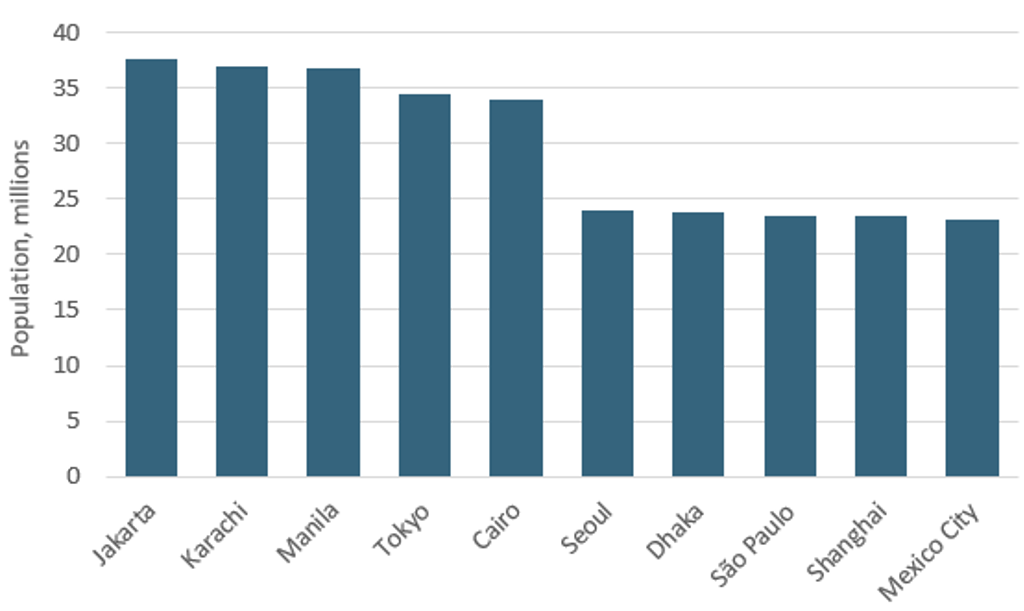Cities and urban consumers are subject to an array of forces which shape their future characteristics, stemming from technological advances, consumer lifestyle changes and economic growth patterns. Understanding the long-term trends is critical as they can help businesses establish credible strategies that match prevailing consumer tastes and help inform governments of future infrastructure needs.
We have identified five major long-term trends impacting cities at a global level including the acceleration of smart cities and the rising importance of urban sustainability as part of city planning and regulations: Coronavirus (COVID-19) may produce a short-term slow-down of urbanisation, especially in highly densely populated advanced economies, but at the same time, it could spur an acceleration of digital solutions that have already aided countries in mitigating virus transmission.
1. Smart cities: Cities are incorporating digital solutions to help manage their assets. Technological advances in sensor technology, artificial intelligence, analytics and machine learning are allowing them to improve decision making, reduce costs and improve sustainability.
For example, the Chinese multinational, Alibaba rolled out ‘City Brain’ in 2016 in Hangzhou, China as a tool for managing traffic. The system uses smart cameras to acquire real-time data on vehicle flows and is integrated into the functioning of traffic light systems.
2. Megacities: Metropolises with 10 million or more people, better known as megacities, are becoming more commonplace in the 21st Century. This is especially true in emerging countries which have dominated population growth in the past 30 years. As of 2019, there were 34 megacities – 27 of which are in developing markets.
Over 2020-2040 – a further eight cities will join the megacity ranks, seven of which will originate in developing markets. As more resources will be used up, business opportunities orientated around smart city developments will be required to maintain the full and efficient functioning of megacity landscapes.
Top 10 Largest Cities: 2040
Source: Euromonitor International from National Statistics
3. Urban sustainability: Climate change is forcing cities to take a stand on sustainability, with city authorities increasingly putting restrictions on internal combustion engine cars in city centres, increasing the use of sustainable energy resources and implementing better resource efficiency (such as water and energy). Also, changing urban designs are increasing the availability of green spaces and vegetation as a sustainable way to reduce carbon dioxide and improve livability.
For example, Copenhagen is transforming itself into one of the world’s most sustainable cities thanks to its increased use of electric buses, large investment in cycling infrastructure and the surging focus on organic and local produce.
4. Emerging cities: The swift rise in disposable incomes across many developing cities has prompted the emergence of a new middle class, presenting new opportunities for businesses.
Indian cities, such as Delhi and Mumbai, have experienced nearly a three-fold rise in disposable incomes (current prices) thanks to economic development over 2009-2019. The rising middle class – most of which is concentrated in major urban areas has attracted international retailers and has boosted consumer spending.
5. Seamless mobility: Mobility is no longer about personal car ownership. Instead, it is centred on providing frictionless mobility from point A to point B in the most convenient, cost-effective and time-efficient manner. Seamless mobility aims to solve the first and last-mile problems, excessive congestion and unwarranted air pollution.
Cities are seeing the growth of mobility-as-a-service solutions which integrate a whole variety of transportation options including ride-hailing, scooter sharing and public transport, into one complete mobility package. Helsinki launched its mobility-as-a-service solution in 2017 and has since expanded to other places including Antwerp and Vienna.
